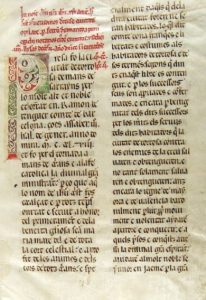Continguts
- 1 1. Corpus
- 2 2. Digitalization
- 3 3. Texts analysis according to their geolinguistic area
- 4 4. The creation of a database with the linguistic features from which all the diathopic variation is articulated to the catalan language. This database will enable us to achieve the objective number five.
- 5 5. The interpretation of the variation from the diachronic and diathopic interdialectal axis
1. Corpus
a. Text selection, focused on the non-literary ones, from all the dialectal areas and from the whole history of the language, in order to see to what degree the oral language is reflected in the writing.
b. Text transcription if the text is not published; if the text is published we can compare it with the original
2. Digitalization
a. Text digitalization.
b. Careful review of the scanned digitalizations and those that have been introduced.
3. Texts analysis according to their geolinguistic area
a. Linguistic analysis (graphic, phonetic, morphosyntactic and lexical). This linguistic commentary is the most important part of the work. Specially because they are made by specialists and revised by the scientific supervisor.
b. The labelling of the linguistic characteristics in which the analysis is focused to extract the necessary information in order to set up the database.
4. The creation of a database with the linguistic features from which all the diathopic variation is articulated to the catalan language. This database will enable us to achieve the objective number five.
a. The labelling of the texts and the organization of the linguistic data in order to obtain agreements.
b. The elaboration of a glossary with the linguistic data from the texts.
c. The construction of a database which enables us to make an interdialectal comparison and observing the diachronic evolution
5. The interpretation of the variation from the diachronic and diathopic interdialectal axis
a. The set up of the parameters for interpreting the variation from both the diachronic and diathopic interdialectal axis.

